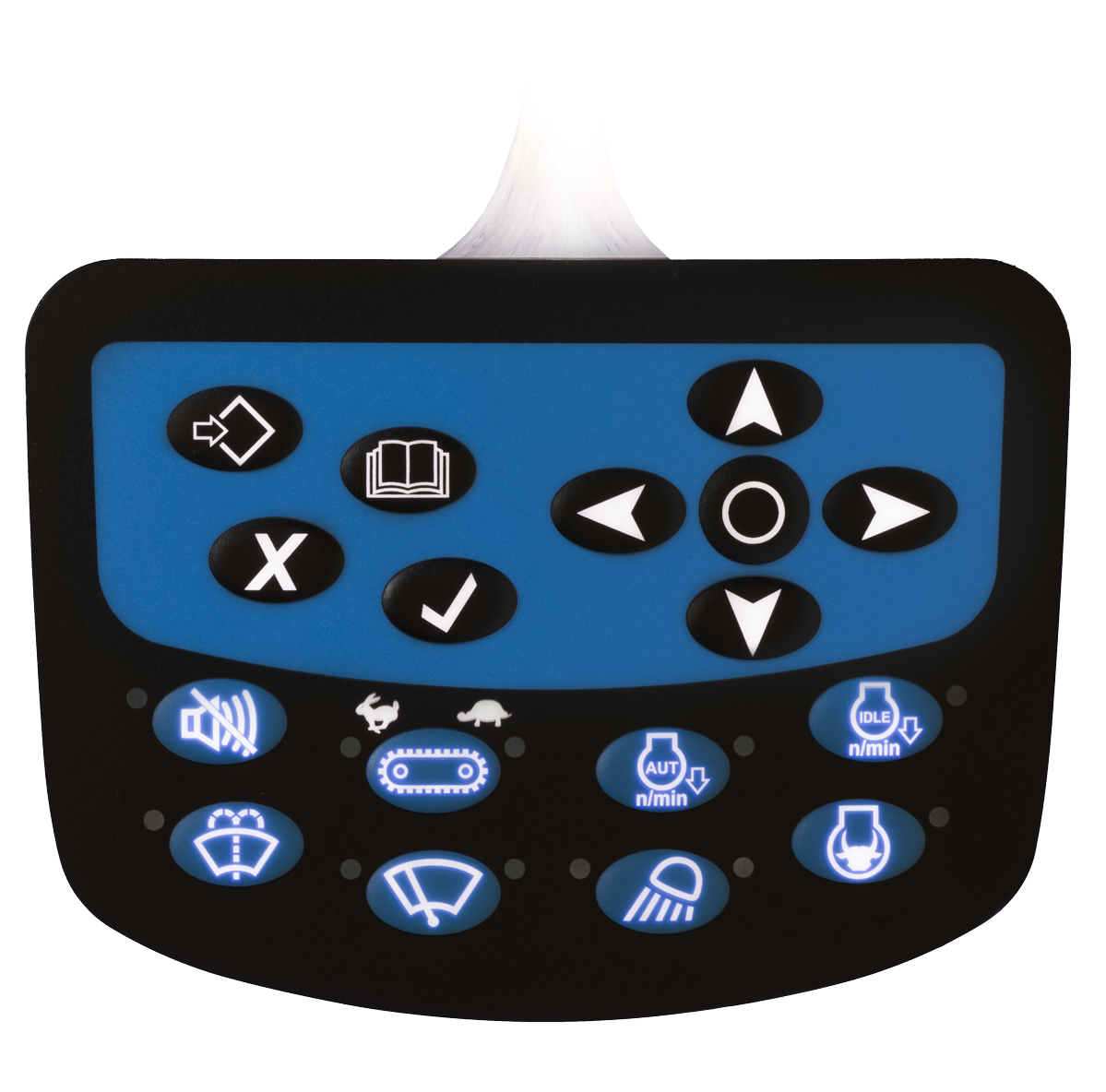Membrane Switches: The Best Choice for Compact and Reliable Controls
Membrane Switches: The Best Choice for Compact and Reliable Controls
Blog Article
Comprehending the Importance of Membrane Switches in User User Interfaces
Membrane buttons are essential elements in the layout of effective individual interfaces, promoting not just functionality however additionally boosting aesthetic appeal and individual communication. As we discover the future patterns and numerous benefits linked with Membrane technology, it becomes clear that these switches are a lot more than just elements; they represent a merging of advancement and usefulness.
What Are Membrane Buttons?

The spacer layer, which has glue properties, permits the splitting up of the circuit layer from the overlay, making sure that the switch remains in a non-activated state until pushed. When stress is related to the overlay, it compresses the spacer layer, connecting the gap and completing the circuit in the underlying layer. This style not just minimizes the physical space needed for typical mechanical buttons however also enhances the durability of the tool, as Membrane switches are usually resistant to dust, dampness, and other environmental aspects.
Frequently found in applications varying from consumer electronic devices to medical devices, Membrane switches are indispensable to contemporary technology, supplying a easy to use and efficient user interface that aligns with modern design needs.
Advantages of Membrane Switches
While countless switch modern technologies exist, Membrane Switches deal unique benefits that make them particularly preferable in various applications. Among the key benefits of Membrane switches is their small layout, which enables space-saving executions in devices where realty is restricted. Their thin profile not just enhances aesthetic allure but likewise promotes lightweight building.
An additional significant benefit is their resistance to ecological factors. Membrane buttons are commonly sealed against dampness, dirt, and contaminants, making them suitable for usage in demanding environments, such as medical tools and commercial equipment. This sturdiness expands the life-span of the switch, minimizing upkeep prices and boosting integrity.
Additionally, Membrane buttons can be tailored to fulfill specific design demands, integrating special graphics and shades that boost customer communication. Their responsive responses options can also be tailored to provide a rewarding individual experience. Furthermore, Membrane switches are affordable, especially in high-volume applications, as they can be produced efficiently.
Applications in Different Industries

In the customer electronics sector, Membrane switches are prevalent in tools such as microwaves, washing machines, and remotes. Their tactile feedback and visual options boost individual experience while providing a streamlined, contemporary appearance. Additionally, auto manufacturers use Membrane switches in control panel controls and infotainment systems, where space is restricted, and user interaction is vital.
Moreover, the commercial sector leverages Membrane buttons in control panels for machinery and tools, permitting instinctive operation in usually extreme settings. Their resistance to chemicals and wetness makes certain durability and integrity in these applications. In general, the flexibility of Membrane Switches adds significantly to their extensive usage, making them essential in numerous technical domains.
Style Considerations for Membrane Buttons

When designing Membrane switches, a number of vital considerations should be thought about to make certain optimum functionality and individual experience. The choice of materials is crucial; choosing resilient, premium substratums can improve the switch's durability and resistance to environmental elements such as moisture and temperature fluctuations.
Secondly, the layout of the visuals overlay need to focus on clearness and simplicity of use. Icons and text have to be understandable, and the format must assist in user-friendly interaction (membrane switches). Additionally, responsive responses is necessary; integrating a tactile dome or other devices can boost the individual experience by offering physical confirmation of activation
An additional crucial element is the switch's electric efficiency. Designers have to make certain that the conductive traces are appropriately developed to minimize resistance and stay clear of signal interference. This involves analyzing the needed actuation force and guaranteeing compatibility with the electronic parts they will user interface with.

Future Fads in Membrane Innovation
As technology remains to advance, Membrane buttons are poised to advance considerably, driven by technologies in materials and making techniques. One arising fad is the consolidation of innovative materials, such as conductive inks and versatile substratums, which boost sturdiness and lower the overall weight of Membrane buttons. These products not only enhance the responsive response however additionally permit sites the design of buttons that can hold up against harsher environmental conditions.
Moreover, the integration of touch-sensitive technologies is transforming standard Membrane Switches into more interactive individual interfaces. Capacitive touch sensing units installed within Membrane button panels can provide a much more responsive and instinctive user experience, aligning with the growing demand for smooth, contemporary layouts in customer electronic devices.
In addition, advancements in printing techniques, such as digital and 3D printing, enable rapid prototyping and customization of Membrane buttons. This adaptability permits manufacturers to respond quicker to market demands and customer preferences.
Finally, sustainability is becoming a substantial emphasis, with suppliers discovering eco-friendly materials and procedures. As these fads unravel, the future of Membrane innovation guarantees enhanced functionality, aesthetic allure, and ecological obligation, solidifying their role in advanced user interfaces throughout numerous markets.
Final Thought
In conclusion, Membrane Switches represent a vital element in the design of individual look at here now interfaces, incorporating performance with visual versatility. As innovations in innovation proceed, the evolution of Membrane buttons is expected to additional refine individual interfaces, driving technology and improving use in an increasingly complicated technical landscape.
Membrane switches are important components in the style of reliable user interfaces, helping with not just capability but additionally enhancing aesthetic charm and customer interaction.Membrane Switches offer as an essential component in different directory individual interfaces, promoting a seamless interaction between individuals and digital tools.While numerous switch innovations exist, Membrane Switches deal distinctive benefits that make them particularly desirable in various applications.Furthermore, Membrane buttons can be customized to meet particular style demands, including one-of-a-kind graphics and shades that boost user communication.In conclusion, Membrane Switches stand for an essential component in the design of user interfaces, combining functionality with visual adaptability.
Report this page